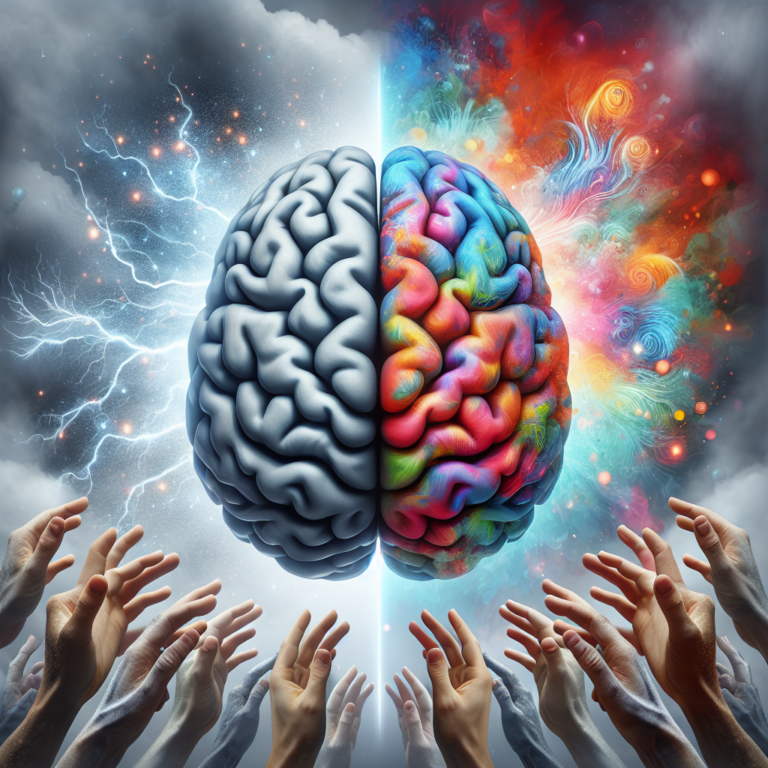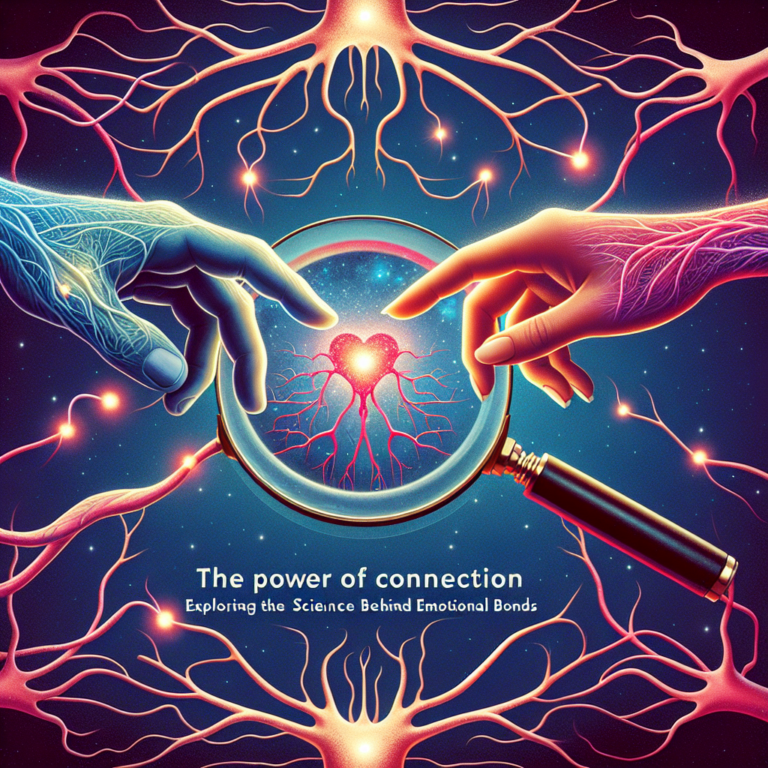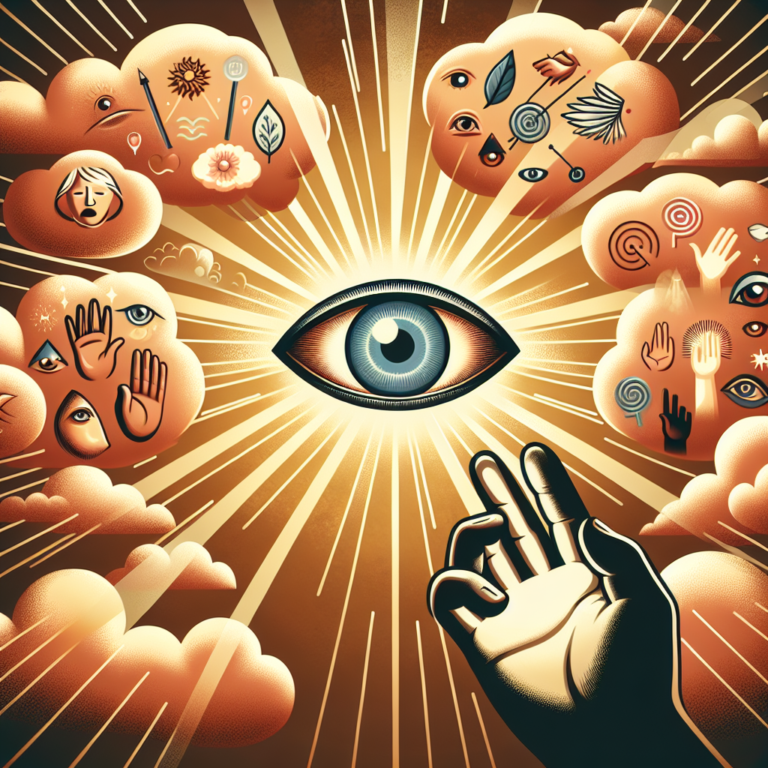Recognizing the Signs: A Comprehensive Guide to Bipolar Disorder Symptoms and Management
Introduction
Bipolar disorder, a complex mental health condition that affects millions around the world, often remains misunderstood and under-discussed. This guide, titled Recognizing the Signs: A Comprehensive Guide to Bipolar Disorder Symptoms and Management, is designed to shed light on the often-overlooked nuances of this condition. By understanding the symptoms and effective management strategies, we can pave the way for a healthier, more balanced life for those affected. Whether you’re seeking insight for yourself or a loved one, this guide will provide the tools necessary to recognize the signs of bipolar disorder and offer actionable steps for management.
Understanding Bipolar Disorder
What is Bipolar Disorder?
Bipolar disorder involves extreme mood swings that include emotional highs (mania or hypomania) and lows (depression). These shifts can significantly affect one’s energy, activity levels, sleep patterns, behavior, and overall quality of life. Understanding bipolar disorder begins with a clear recognition of its hallmark symptoms, which can vary widely from person to person.
Types of Bipolar Disorder
There are several types of bipolar disorder, including:
-
Bipolar I Disorder: Characterized by manic episodes that last at least seven days, or by manic symptoms that are so severe that immediate hospital care is needed. Depressive episodes can also occur, lasting at least two weeks.
-
Bipolar II Disorder: A milder form, defined by a pattern of depressive episodes and hypomanic episodes, but without the full-blown manic episodes that are typical of Bipolar I disorder.
- Cyclothymic Disorder (Cyclothymia): A milder form of bipolar disorder characterized by periods of hypomanic symptoms as well as periods of depressive symptoms lasting for at least two years (one year in children and adolescents).
Recognizing the Signs
The importance of Recognizing the Signs: A Comprehensive Guide to Bipolar Disorder Symptoms and Management cannot be overstated. It’s crucial for individuals and their loved ones to identify the signs and symptoms to initiate early intervention and treatment.
Symptoms of Mania
During a manic episode, individuals may experience:
-
Increased Energy and Activity: A surge of energy that leads to hyperactivity and a lack of need for sleep.
-
Elevated Mood: An unusually upbeat or irritable mood.
-
Racing Thoughts: Jumping rapidly from one idea to another.
- Risky Behaviors: Engaging in activities that have a high potential for painful consequences, such as unprotected sex or reckless spending.
Symptoms of Depression
Conversely, during a depressive episode, symptoms may include:
-
Persistent Sadness: Feeling empty, hopeless, or tearful.
-
Loss of Interest: No longer enjoying previously pleasurable activities.
-
Fatigue: A significant drop in energy, leading to physical and mental exhaustion.
- Suicidal Thoughts: Recurring thoughts of death or suicide.
Case Study: Joe’s Journey
Let’s consider Joe, a 28-year-old graphic designer who struggled for years with seemingly erratic moods. Joe first experienced severe depressive episodes during college, marked by significant fatigue and a lack of interest in his studies. At times, he exhibited behaviors that alarmed his friends—such as sudden spending sprees and reckless driving—leading to concerns about his mental well-being. Recognizing the signs of his bipolar disorder early allowed Joe to seek treatment, resulting in a balanced life through therapy and medication.
The Role of Genetics and Environment
Research indicates that bipolar disorder has a genetic component; individuals with a family history of the disorder are at a higher risk. However, environmental factors, such as stress, trauma, or significant life changes, also play critical roles in its onset and management.
Management Strategies
Recognizing the signs is only the beginning. Effective management of bipolar disorder requires a multifaceted approach.
1. Professional Help
Psychotherapy
Psychotherapy, or talk therapy, is a cornerstone of bipolar disorder management. Techniques such as cognitive-behavioral therapy (CBT) can help individuals recognize and change negative thought patterns and behaviors. Other therapeutic approaches may include:
-
Interpersonal and Social Rhythm Therapy (IPSRT): Focuses on stabilizing daily rhythms, such as sleep patterns and routine activities.
- Family-Focused Therapy: Involves family members in education and support, fostering better relationships and understanding.
Medication
Medication can be essential for managing symptoms. Commonly prescribed medications include:
-
Mood Stabilizers: Such as lithium, which help balance mood swings.
-
Anticonvulsants: Sometimes used to treat mood disorders, particularly in cases where lithium is ineffective.
- Antipsychotics: Can help with severe symptoms, particularly during manic episodes.
2. Lifestyle Modifications
Self-care strategies are vital in maintaining balance and preventing episodes:
-
Routine: Establishing a consistent daily schedule can help regulate mood swings.
-
Exercise: Regular physical activity can alleviate symptoms of depression and anxiety.
-
Diet: A balanced diet rich in omega-3 fatty acids, whole grains, and lean proteins supports overall mental health.
- Sleep Hygiene: Prioritizing good sleep hygiene can stabilize mood and energy levels.
3. Support Systems
Encouragement from loved ones plays a significant role in the successful management of bipolar disorder. Support groups can also provide a platform for sharing experiences and coping strategies. In these environments, individuals can feel understood and validated.
Case Study: Maria’s Support Network
Maria, a 35-year-old teacher, benefited greatly from a strong support network. After being diagnosed with bipolar disorder, her friends and family educated themselves about the condition, allowing them to provide informed support. Maria openly discussed her experiences with her close friends, creating a safe space for herself that significantly lessened her feelings of isolation.
Tools for Tracking Symptoms
Maintaining awareness and tracking mood can enhance management strategies. Consider utilizing:
-
Mood Tracking Apps: Many apps allow users to log daily moods, sleep patterns, and triggers, facilitating better communication with healthcare providers.
- Journaling: Writing about daily emotions can help identify patterns of behavior and triggers.
Table: Common Symptoms and Management Techniques
| Type | Symptoms | Management Techniques |
|---|---|---|
| Mania | Elevated mood, racing thoughts | Medication (mood stabilizers), therapy |
| Depression | Sadness, loss of interest | Psychotherapy, lifestyle modifications |
| Hypomania | Increased energy, impulsivity | Behavioral therapy, routine stabilization |
Conclusion
Recognizing the Signs: A Comprehensive Guide to Bipolar Disorder Symptoms and Management highlights the significance of awareness, professional support, and self-care in dealing with this multifaceted condition. Understanding bipolar disorder is crucial for fostering empathy and support for those affected.
If you or someone you know exhibits the symptoms detailed in this guide, it’s imperative to seek professional help. Managing bipolar disorder is not only about treating symptoms; it’s about achieving balance, improving quality of life, and fostering successful relationships with family and friends.
Takeaway
You are not alone in this journey. With the right information, resources, and support, individuals with bipolar disorder can lead fulfilling lives.
FAQs
1. What are the early signs of bipolar disorder?
Early signs may include significant mood swings, sleep disturbances, changes in appetite, and unusual energy levels. Awareness of these signs can lead to earlier interventions.
2. Can bipolar disorder be cured?
While there is no cure for bipolar disorder, it can be effectively managed through a combination of medication, therapy, and lifestyle changes.
3. How can family members support someone with bipolar disorder?
Family members can provide emotional support, educate themselves about the condition, encourage treatment adherence, and foster open communication about feelings and experiences.
4. Is it possible to live a normal life with bipolar disorder?
Yes, many individuals with bipolar disorder lead healthy and successful lives with the right treatment and support.
5. What should I do if I suspect I have bipolar disorder?
If you believe you may have bipolar disorder, seek a healthcare professional for a thorough assessment. Early recognition and intervention can significantly impact your management and lifestyle.
Recognizing the Signs: A Comprehensive Guide to Bipolar Disorder Symptoms and Management is not just about knowledge; it’s about empowering individuals to take control of their mental health and pursue brighter futures.
















